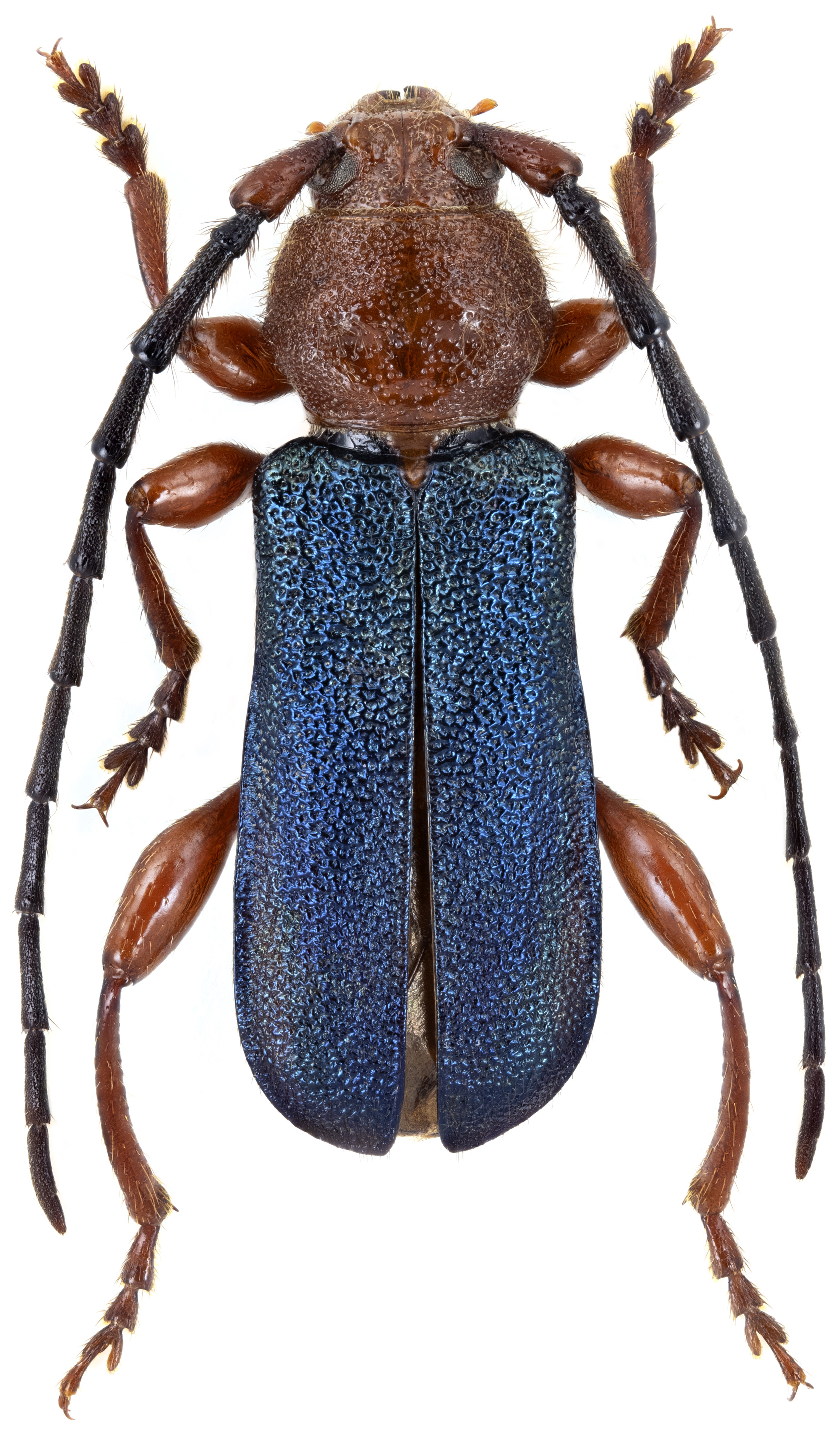Ropalopus ledereri, a beautiful and very rare species of the southeastern Mediterranean region, has beed described from Asia Minor by Léon Marc Herminie Fairmaire in 1866 [▽].
R. ledereri, together with its sister species Ropalopus wittmeri Demelt, 1970, is a typical inhabitant of quickly receding
Quercus coccifera forest-steppe formations.
Larval biology is similar to Ropalopus varini. R. ledereri larvae develop in twigs and thin branches
of oaks, reported was also from Crataegus, Prunus and Carpinus [✮]. Adult beetles can be found sitting on leaves of the hosts or occasionally they gather on juice-oozing
oak trees. They never visit flowers.
| Body length: | 9 - 14 mm |
| Life cycle: | 2 years |
| Adults in: | May - June |
| Host plant: | predominantly in oaks (Quercus spp.), also in Crataegus, Prunus and Carpinus |
| Distribution: | Israel, Jordan, Turkey |
The depicted beetle was beaten from a living oak (Quercus) in Karadut village environs (Nemrut Dagi National Park, Adiyaman province, Anatolia, SE Turkey).
Collected by Michal Hoskovec
[▽]
Fairmaire L.M.H.:
Notice sur les Coléoptères récoltés par M. J. Lédérer sur le Bosz-Dagh (Asie Mineure).
Annales de la Société Entomologique de France, Paris (4) 6: 249-280, 1866.
[download  ]
]
[✮]
Özdikmen H.:
Taxonomic status of Ropalopus ledereri (Fairmaire) and Ropalopus wittmeri Demelt with new host plants and records from Turkey (Cerambycidae: Cerambycinae).
Munis Entomology & Zoology 18 (1): 625-628, 2023.
[download  ]
]
Sama G.:
Su alcuni nuovi o interessanti Cerambicidi del medio Oriente (Insecta Coleoptera Cerambycidae).
Quaderni di Studi e Notizie di Storia Naturale della Romagna 13 (supplemento): 91-105, 2000.
[download  ]
]


